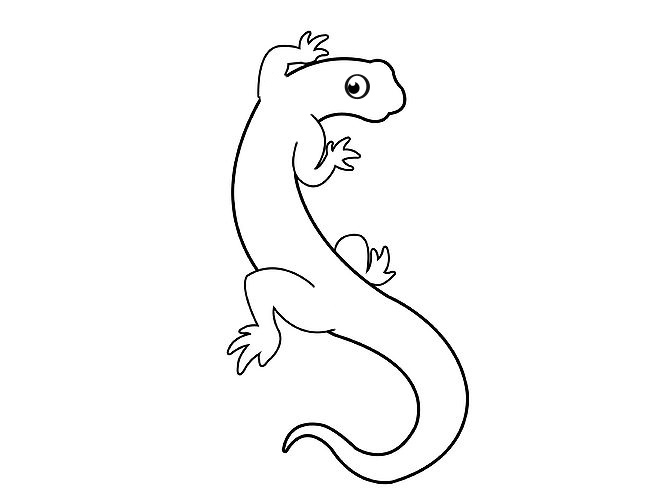As sweltering temperatures lose their grip on the deep south, and the daily humidity and thunderstorms wane into blue skies of high pressure, the diurnal snake activity surges. This is especially evident in the reptiles of the Florida Uplands. People come from far and wide in hopes of seeing some of these unique animals that inhabit a sensitive ecosystem.
On countless Saturday mornings in late summer and early fall I have awoken to the sunrise twilight. I peak out my bedroom window to see if the sky is void of cloud cover, and if it is, I begrudgingly force myself out of bed and into my car. Usually I'll sit in my car for a good 10 minutes blinking away the weird thoughts of sleepiness and then another few minutes contemplating whether to drive south one hour into the Ocala National Forest, or northwest one hour into the Tifton Uplands. It usually comes down to what I want to see. Southern Hognose Snakes (Heterodon simus) or Eastern Hognose Snakes (Heterodon platirhinos) are usually on the menu and are typically the main goal for herpers hunting in these regions.
Going south into Ocala National Forest this time of year you are more apt to find Eastern Hognose. The numerous grids of sandy roads are ideal for snakes to soak up the heat from the morning sun. I recall one October morning in 2008 when my final denouement led from my driveway to this forest in the heart of Florida. It was a picture perfect morning and I was especially tired (I probably indulged in one too many bar sodas the night before). I arrived at one of my main cruising roads just as the sun was kissing the tops of the longleaf pines.
Temperatures were still cool, maybe only in the mid-60's and the dew was still adorned to the orb weaver spider webs. By the time the sun was high enough to soak the roads in sunlight, I was seeing snake trails and I knew the time was perfect. I trudged on as the blinding reflection of the sun's rays on white sand caused a perpetual squinting of the eyes. But I knew there would be hognose moving...and I was correct. I drove directly over what was clearly a young hognose, straddling it between my tires. I leisurely got out of the car, knowing that these snakes are as slow as a one-legged turtle. Sure enough, a hatchling hognose sat coiled in the middle of the road. Young Eastern Hognose are all generally pretty similar; a light gray with black, or dark gray, jagged saddles.
Some individuals in this area maintain that look into adulthood or get even lighter.
While others will turn almost uniformly black with a blueish gray belly.
I photographed the baby and moved on. That day I cruised until the early afternoon and would end up finding four more babies of similar size and two black adults. I left the forest happy that I had fought off the Sand Man that morning.
Southern Hognose (or just "simus") are a species that ranges through the north 2/3 of Florida. However, they are only commonly seen in small sections of the northwestern portion of the peninsula. The first time I encountered this animal was in early October on a day much like the Eastern Hognose day. Mark Kenderdine and Chuck Saitta agreed to show Daniel Dye and myself a group of roads known as "The Blocks." Mark and Chuck traveled in one car and Daniel and I in another. They were the seasoned experts and had been coming to this location for years. They told us how the old timers would pay the local kids a few dollars to drive around the grid of sandy roads on their bikes and collect simus. The stories told by Chuck and Mark replayed in our heads as we drove the network of roads. Although a mundane and overall hypnotic way to look for snakes, driving sandy grid roads can be quite productive. We had just turned down a road when I told Daniel to "stop, I saw something." I didn't know if it was a snake but it definitely looked different than the other trillion sticks. We get out of the truck and Daniel immediately says "SIMUS" and as I go around the back of the truck I say "YES" and picked it up. I looked up to see him looking at the ground. He wasn't looking at the same snake. We were both overjoyed to see two hatchling simus only three or four feet apart on the road almost exactly parallel. It was even more satisfying because these were lifers for both of us. We saw that they were heading away from a manicured lawn that stretched out in front of a Turkey Oak forest. We walked in the grass to see if there were more, and sure enough, Daniel picks up a third hatchling from the grass. All three were varying degrees of the "red phase" Southern Hognose. We brought them to show Mark and Chuck who both hadn't seen anything yet. Mark said something along the lines of "I knew we shouldn't have brought you here; you found our snakes."
On subsequent trips to areas north and south I've seen countless adults, juveniles and hatchlings of several color varieties. To me they are all of equal beauty. I don't keep or sell them, so they are only worth the memories I take. Of course memories are much easier to recall if you take 100 digital pictures of each snake.








